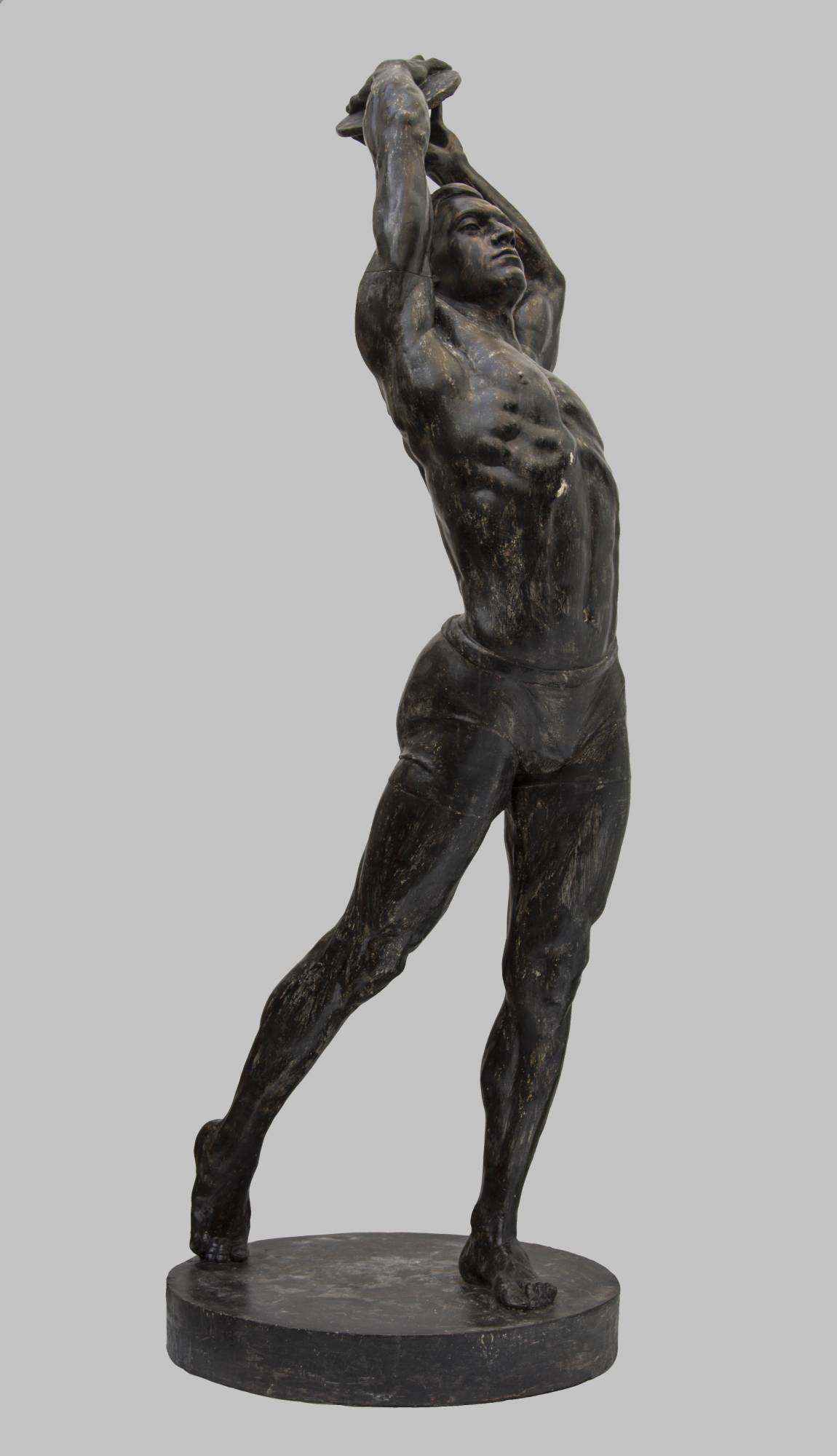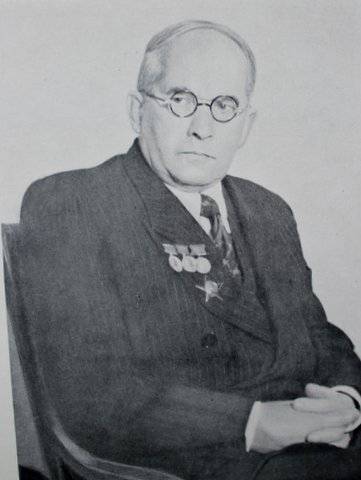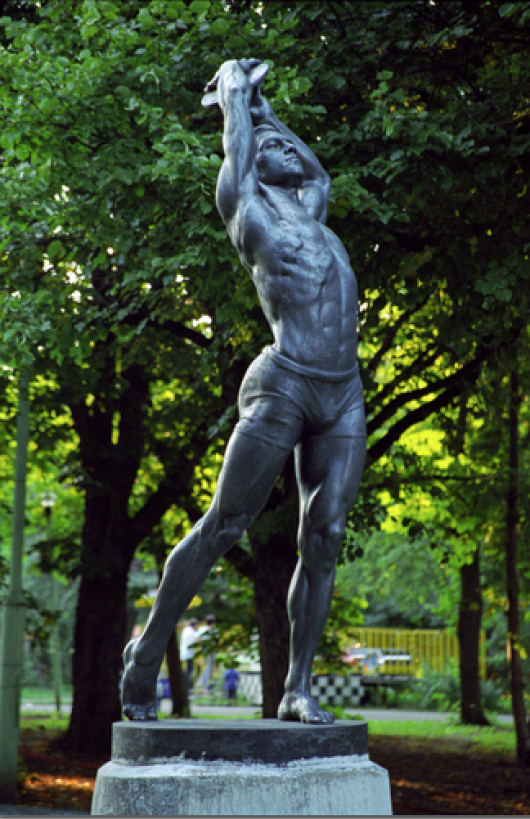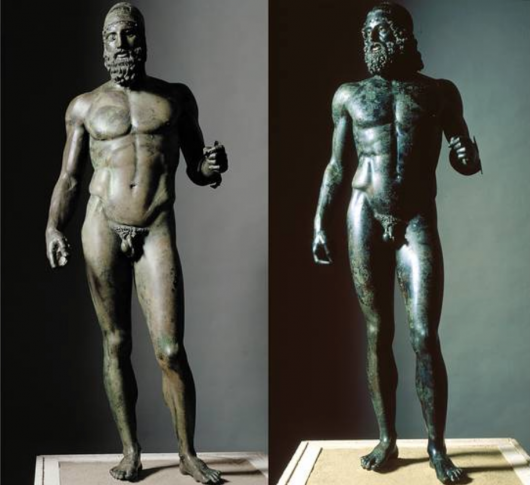Discobolus

Manizer, Matvej Genrikovich
1891 - 1966
Discobolus
Stained plaster
243 x 87 x 85cm
1926
PROVENANCE:
Cast in Monument Sculpltura foundry in St Petersburg under artists supervision in 1926
Remained there until the closure of the foundry in the 1980's
Private Collection, St Petersburg
Private Collection, London
LITERATURE:
Masterpieces of Soviet Painting and Sculpture, Unicorn Press, London, 2016, the sculpture section written by Lyudmila Marts - curator of Sculpture at the Tretyakov Gallery, the Russian museum version illustrated on p. 270.
Discobolus is one of the most important sculptures of the early Soviet period. The over life-size portrait depicts a male athlete, holding a discus, bracing backwards and about to initiate his throw. The athlete just wears a pair of shorts, allowing the artist, Matvej Manizer, to make an accurate study of the musculature. Borrowing from the antique, Manizer depicts the athlete contraposto with most of his weight supported on his left foot.

Manizer was one of the leading sculptors of the Soviet period alongside Shadr, Mukhina, Vuchetich and Konenkov. He was born in St. Petersburg. As a student Manizer attended the State Artistic and Industrial Academy there, and the art school of the Peredvizhniki from 1911 through 1916. From 1926 he was a member of the Association of Artists of Revolutionary Russia. In 1941 he moved to Moscow.

Working in an academic and realistic style, Manizer produced a great number of monuments situated throughout the Soviet Union, including some twelve portrayals of Lenin. Manizer was awarded the People's Artist of the USSR (1958), Member of USSR Academy of Arts (1947), vice president of USSR Academy of Arts (1947-1966), chairman of the Saint Petersburg Union of Artists from 1937 to 1941, and winner of the Stalin Prize three times.

Manizer's wife Elena Alexandrovna Yanson-Manizer (1890-1971) was a sculptor in her own right, with work at the Dynamo station of the Moscow Metro. Their son Hugh Matveyevich Manizer (born 1927) is a noted painter. Among Manizer's students was the Stalin Prize-winning Fuad Abdurakhmanov.

Matvej Manizer in his later years
There are only a few known versions of this sculpture in bronze and plaster. There is a version in plaster in the Russian Museum and another in bronze in a park in St Petersburg.

A version is a park in St Petersburg
The sculpture is cast in three parts, the torso and the two arms were cast separately. Manizer normally made a smaller artists versions of his most important sculptures, but according to Lyudmilla Martz, curator of Sculpture at the Tretyakov gallery, Manizer only made this over life-size version of the sculpture. Our version remained in the Monument Sculptura Foundry in St Petersburg until its closure in the 1980's and is a rare survival of one of the most famous sculptures of the period. The magnificent athlete is anatomically perfect and can admired as an idealized study of male beauty, balance and power.

Of all the Soviet Sculptors Manzier was most influenced by the antique, from sculptures like the two Riace warriors, 450BC, bronze, found in the sea and currently housed in the Museum in Palermo. From the antique Manizer developed lifelike and spatially dynamic figures.


